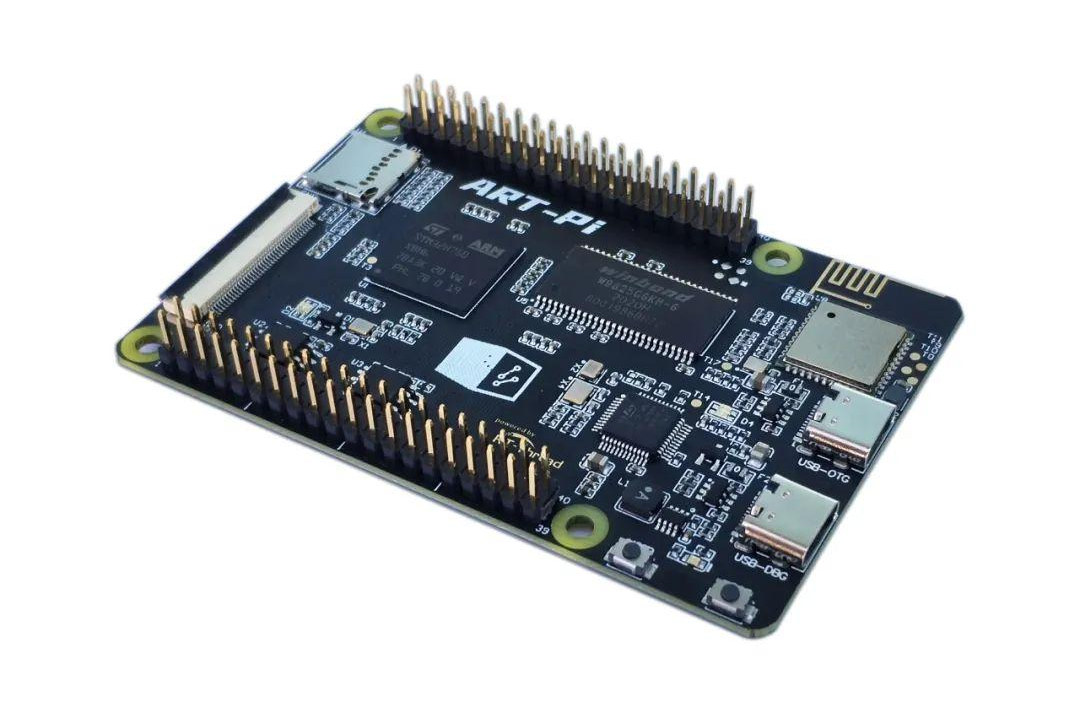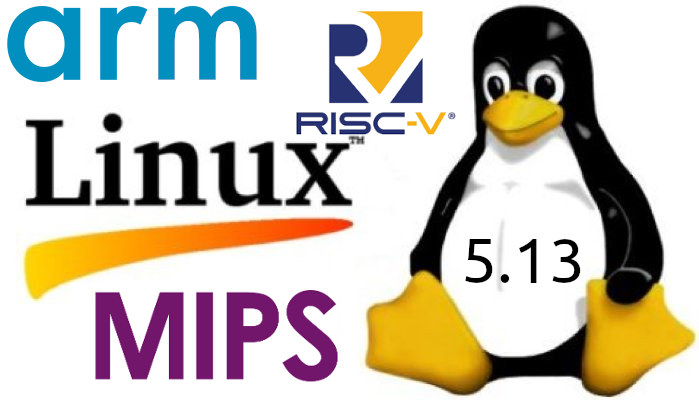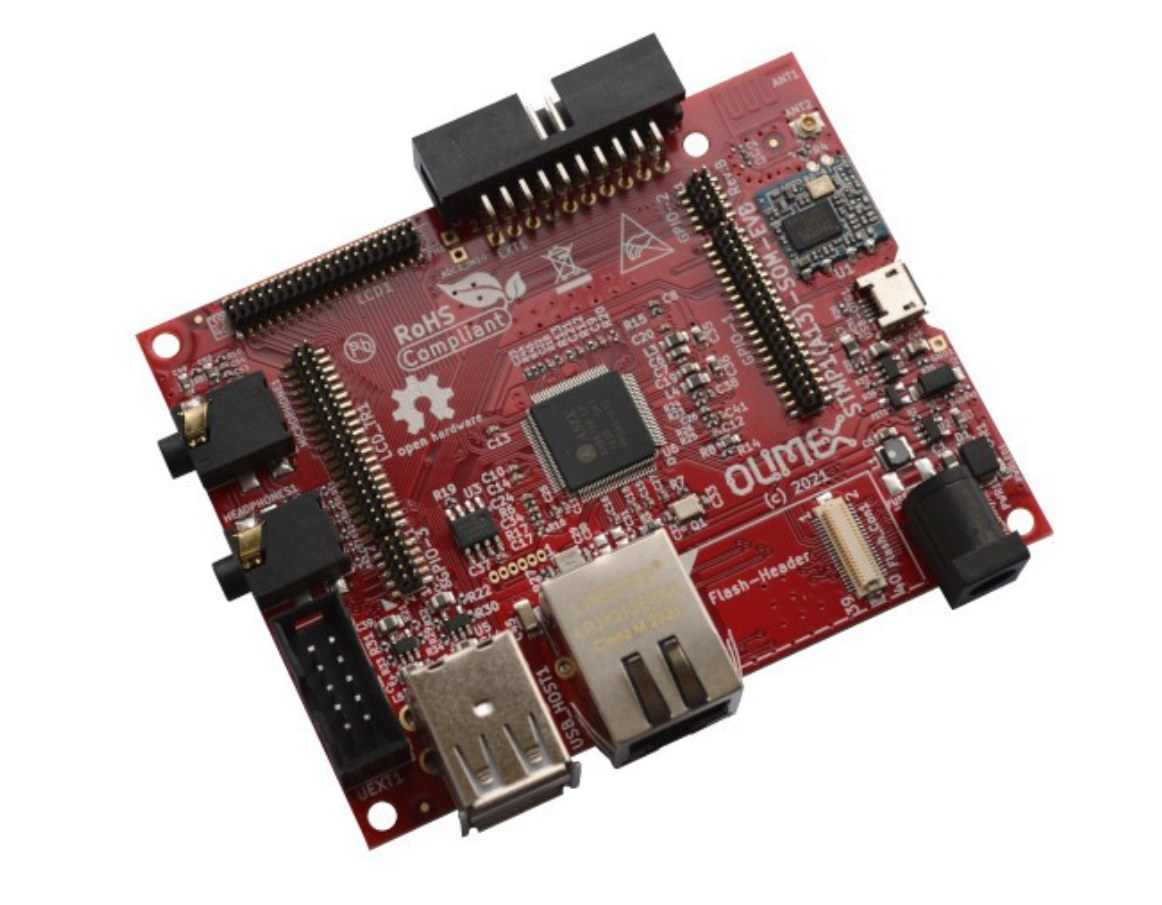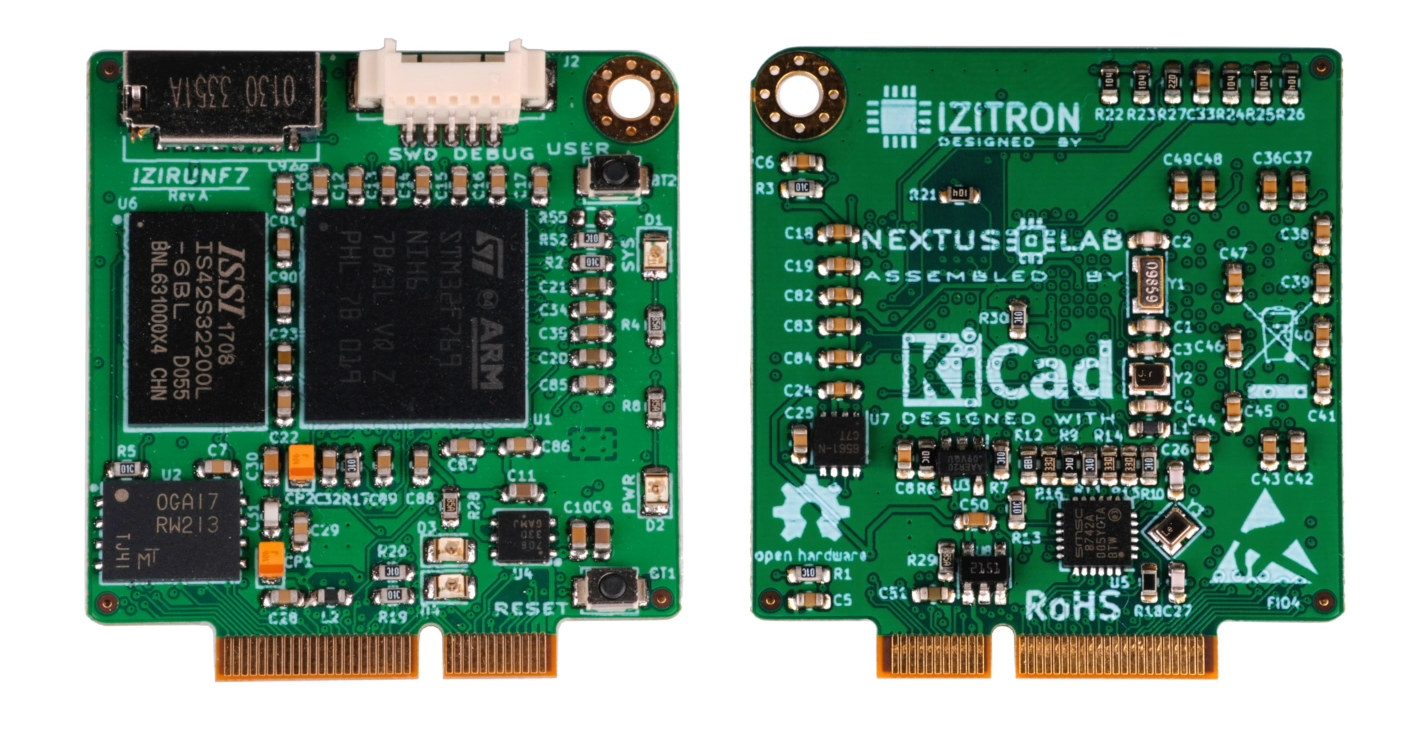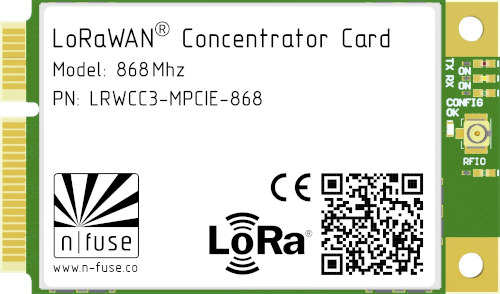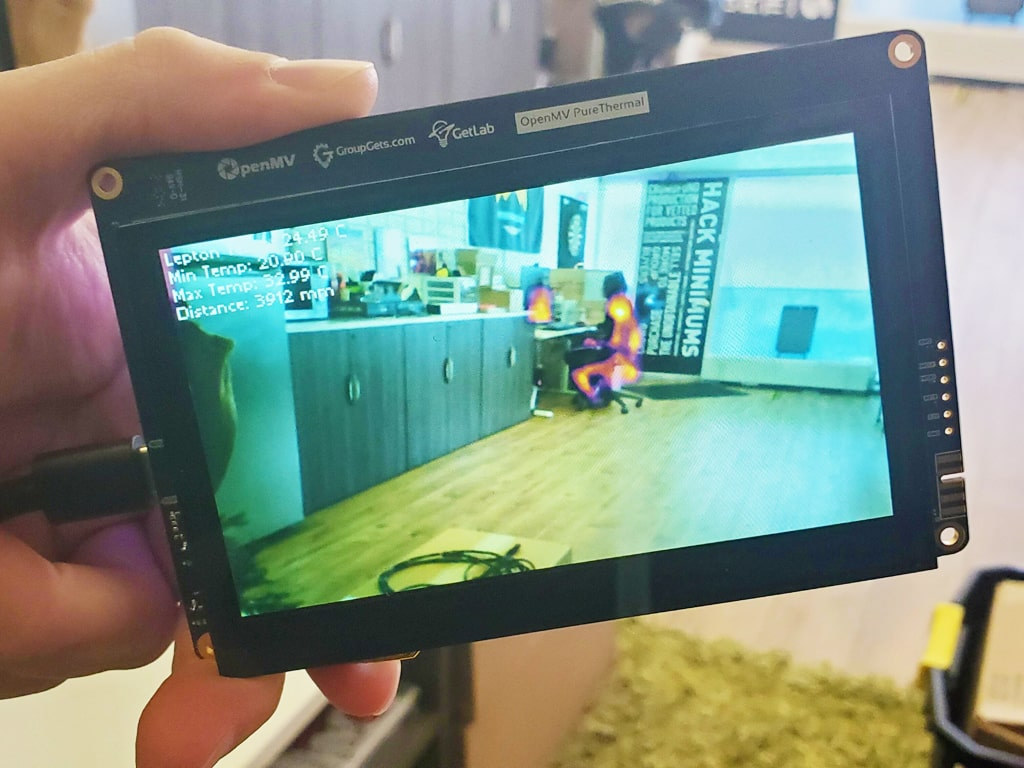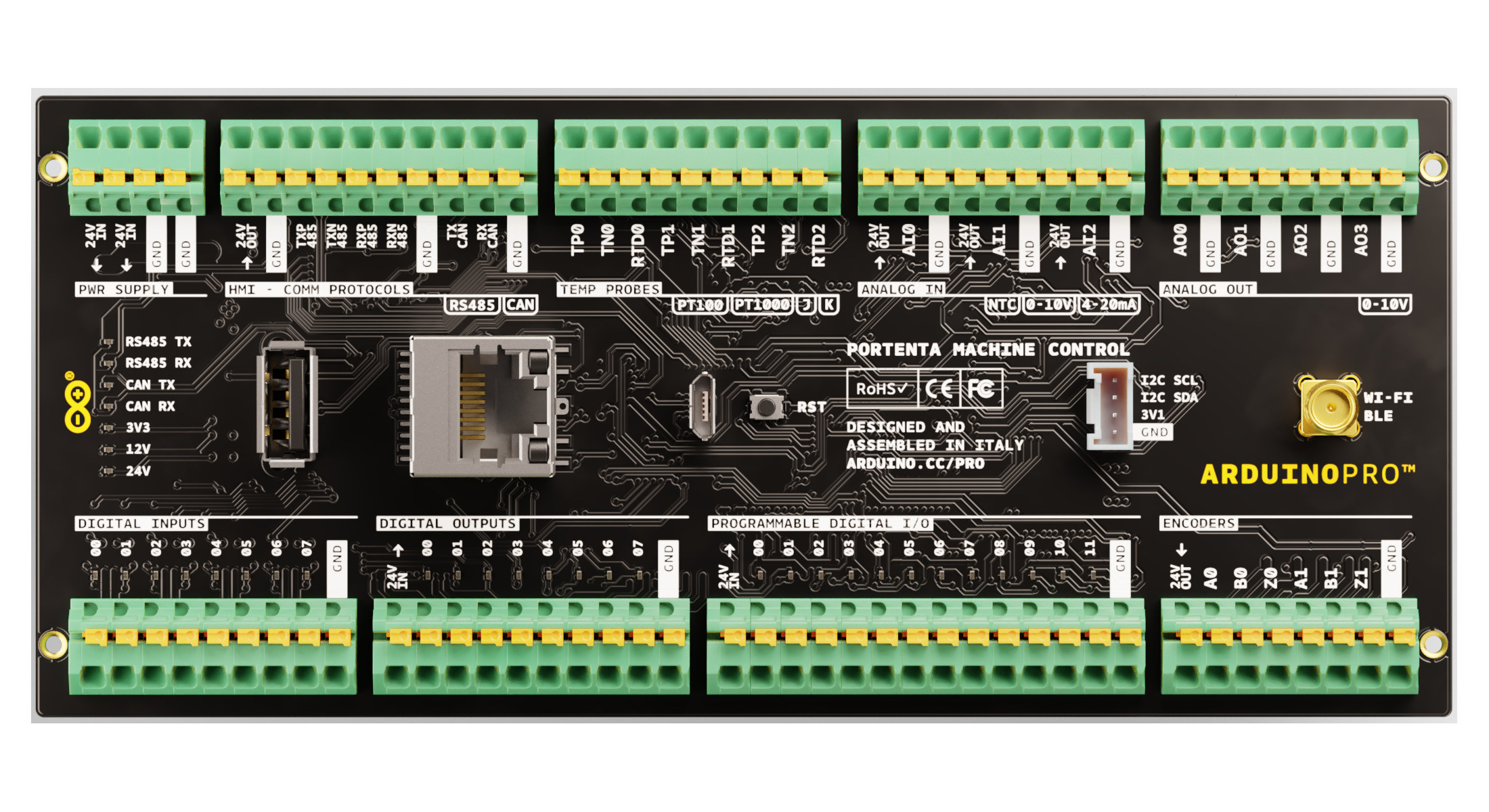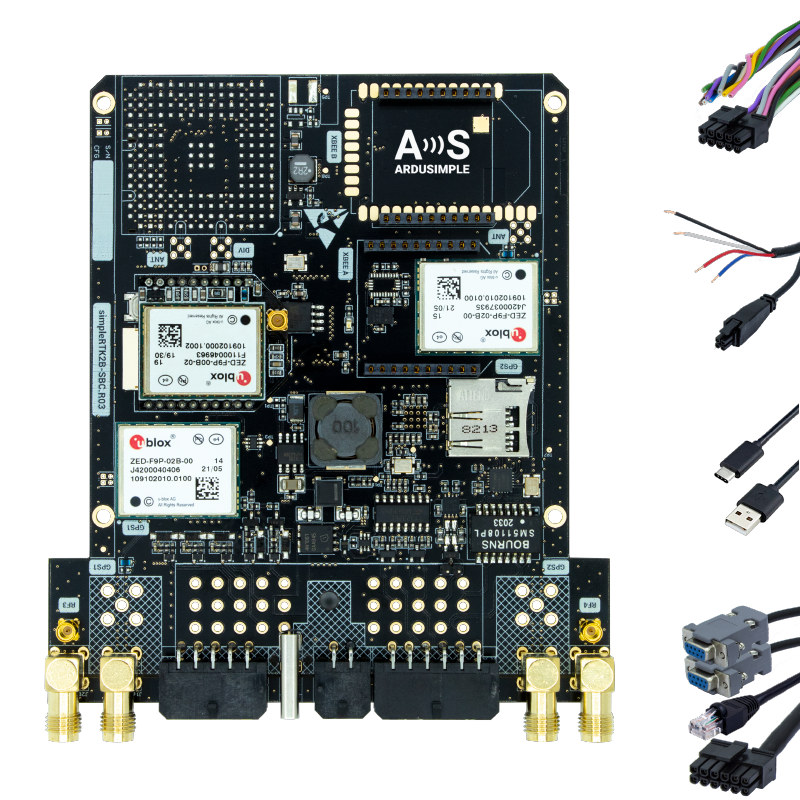I like to browse Linux changelog to learning about new features in the kernel, but also new hardware that made it into mainline Linux, even if only preliminary or partial. And in the just-released Linux 5.13, one board that caught my eye was Art-Pi, powered by an STMicro STM32H750 Cortex-M7 microcontroller without MMU (memory management unit) that was initially designed for RT-Thread real-time operating system. Art-Pi specifications: MCU – STM32H750XBH6 Value Line Cortex-M7 microcontroller @ 400 MHz, with 128KB flash, 16KB D/I cache, 864 SRAM, 64KB+128KB TCM with ECC correction System Memory – 32MB SDRAM Storage – MicroSD card slot, 16 MB SPI flash, 8MB QSPI flash Display – FPC connector for RGB888 displays Connectivity – SDIO WiFi 4 and UART Bluetooth via Ampak AP6212 module USB – 1x USB OTG Type-C port Debugging – On-board ST-LINK/V2.1 via USB-C DBG port Expansion – 2x 40-pin P1 & P2 headers with […]
Linux 5.13 Release – Notable changes, Arm, MIPS and RISC-V architectures
Linus Torvalds has just announced the release of Linux 5.13: So we had quite the calm week since rc7, and I see no reason to delay 5.13. The shortlog for the week is tiny, with just 88 non-merge commits (and a few of those are just reverts). It’s a fairly random mix of fixes, and being so small I’d just suggest people scan the appended shortlog for what happened. Of course, if the last week was small and calm, 5.13 overall is actually fairly large. In fact, it’s one of the bigger 5.x releases, with over 16k commits (over 17k if you count merges), from over 2k developers. But it’s a “big all over” kind of thing, not something particular that stands out as particularly unusual. Some of the extra size might just be because 5.12 had that extra rc week. And with 5.13 out the door, that obviously means […]
Olimex STM32MP1 SoM and evaluation board support Linux 5.10
Olimex has just announced the availability of an STMicro STM32MP1 Cortex-A7/M4 powered system-on-module (SoM) and an evaluator board with respectively STMP15X-SOM available in extended and industrial temperature variants, as well as STMP1(A13)-EVB evaluation board that works with the new STM32MP1 module, as well as earlier A13-SOM Allwinner A13 based system-on-module. Beyond the hardware, the company told us their upcoming STMP1-OLinuXino-LIME2 SBC could support mainline Linux in February, and the company prepared some Linux 5.10 based Debian Buster and Ubuntu Focal images which are now also available for the STMP15X-SOM module. STMP15X-SOM system-on-module Specifications: SoC – STMicro STM32MP151/153/157 dual-core Cortex-A7 @ 650 to 800MHz and Arn Cortex-M4 real-time core @ 209 MHz System Memory – 256 or 512 MB DDR3L Storage – MicroSD card socket Audio – On-module audio codec Board-to-board connectors GPIO-1 40-pin connector with 39 GPIOs, 3x UARTs, 1x QuadSPI, 2x I2C, 2x eMMC GPIO-2 10-pin connector with USB […]
IZIRUN open-hardware STM32 development boards expose GPIOs through M.2 connector (Crowdfunding)
M.2 sockets are typically used to connect wireless or storage expansion boards to laptops, computers, and SBC’s. But nothing precludes them from being used for another purpose, and earlier this year we wrote about Sparkfun MicroMod MCU boards with an M.2 connector for GPIOs, I2C, SPI, etc… IZITRON has expanded the concept with three slightly larger (IZIRUN) STM32 boards routing more IOs to the M.2 connector, and additional features such as built-in EEPROM and buttons. IZIGOBOARD carrier board is then used to host the STM32F0, STM32F4, or STM32F7 board in order to ease development. IZIRUN STM32 development boards IZIRUN boards specifications: Microcontroller IZIRUNF0 – STMicro STM32F030CCT6 Cortex-M0 MCU @ 48 MHz with 256KB flash, 32 KB SRAM IZIRUNF4 – STMicro STM32F407VET6 Cortex-M4 MCU @ 168 MHz with 512KB flash, 192KB SRAM IZIRUNF7 – STMicro STM32F769NIH6 Cortex-M7 MCU @ 216 MHz with 2MB KB flash, 532KB SRAM On-board RAM – IZIRUNF7 […]
n-Fuse introduces SX1303 mPCIe LoRaWAN concentrator card
I first noticed Semtech SX1303 LoRa baseband processor for gateways was in RAKwireless WisGate Developer Base equipped with RAK5146 SX1303 mPCIe LoRaWAN concentrator card. But n-Fuse now offers another option with their LRWCC3-MPCIE mini PCIe card that is an update to their earlier SX1302 based n-Fuse LRWCC2-MPCIE card announced last year. n-Fuse LRWCC3-MPCIE specifications are very similar with the differences highlighted in bold: MCU – STMicro STM32 LoRa Connectivity Semtech SX1303 digital baseband processor with 2xSX1250 and 1xSX1261 Tx/Rx front-ends Frequency Range – 863 to 870 MHz or 915 to 928 MHz Sensitivity 868 Mhz <= -125dBm at SF7, BW 125KHz <= -140dBm at SF12, BW 125kHz 915 Mhz <= -125dBm at SF7, BW 125KHz <= -140dBm at SF12, BW 125kHz Max RF Output Power – Up to +27dBm Listen Before Talk prevents collisions while accessing the spectrum. Fine Time Stamping enables Time Difference of Arrival (TDOA) network-based geolocation. u.FL […]
OpenMV PureThermal STM32H7 board overlays thermal map on RGB image
We’ve been writing about OpenMV open-source camera boards programmable with MicroPython at least since 2015, with the latest model OpenMV Cam H7 based on STM32H7 Cortex-M7 microcontroller introduced in 2018. But the company has now gone a step further with OpenMV PureThermal board equipped with a more powerful STM32H7 dual-core Arm Cortex-M7/M4microcontroller, and supporting FLIR Lepton 2 to 3.5 thermal imagers, allowing the system to overlay the thermal map on top of the image like an augmented reality app would do. It can do so on the integrated LCD display or on an HDMI display. OpenMV PureThermal features & specifications: MCU – STMicro STM32H7 Arm Cortex-M7 @ 480 MHz) and Cortex-M4 @ 240 MHz microcontroller Memory – 64MB SDRAM Storage – 32 MB of QSPI flash for the firmware, a microSD card slot for saving pictures and machine vision assets Display 800×480 touch Screen LCD DVI out for driving an […]
Arduino launches Portenta Machine Control industrial control unit
Arduino Portenta Machine Control is a low-power, industrial control unit powered by Arduino Portenta H7 board and designed to drive equipment and machinery through digital and analog I/O exposed through terminal blocks. The industrial control unit adds to the Arduino Pro family that was introduced in 2020 with support for the Arm Pelion IoT platform, the launch of the STM32H7-powered Arduino Portenta H7 industrial board, and joins another application-specific solution, namely the Arduino Edge Control board for smart agriculture launched last month. Arduino Portenta Machine Control specifications: Portenta H7 board with MCU – TMicro STM32H747XI Cortex-M7 @ 480 MHz + M4 @ 200 MHz MCU with 2MB dual-bank Flash memory, 1 MB RAM, Chrom-ART graphical hardware accelerator System Memory – 8MB SDRAM Storage – 16MB QSPI NOR Flash Connectivity – 10/100M Ethernet RJ45 port, WiFi & Bluetooth LE with u.FL antenna connector USB – 1x USB Programming Port I/O via […]
simpleRTK2B-SBC packs 3 u‑blox ZED-F9P RTK GNSS receivers for centimeter-level GPS positioning
Real-time Kinematic (RTK) relative positioning technique allows for 1-3cm positioning accuracy with data derived from satellite-based positioning systems such as GPS, BeiDou, GLONASS, Galileo, and NavIC. We’ve previously covered Skytraq PX1122R RTK GNSS module as well as SBG Systems Ellipse-D industrial-grade inertial navigation system featuring the technology, and now Spain-based ArduSimple has announced the simpleRTK2B-SBC single board computer that aims to “simplify the development of centimeter-level positioning solutions supporting real-time kinematics (RTK)” via up to three u‑blox ZED-F9P RTK GNSS receivers. simpleRTK2B-SBC board features & specifications: MCU – STMicro STM32F7 Cortex-M7 microcontroller GNSS Positioning 184-channel u-blox ZED-F9P engine Configuration options 2x ZED-F9P for position + heading 3x ZED-F9P for position + full attitude (roll, pitch, yaw) Navigation rate up to 20Hz Position accuracy down to 1 centimeter GPS: L1 & L2; GLONASS: L1OF & L2OF; Galileo: E1 & E5b; BeiDou: B2I & B2I; QZSS and SBAS Up to 4 integrated […]


